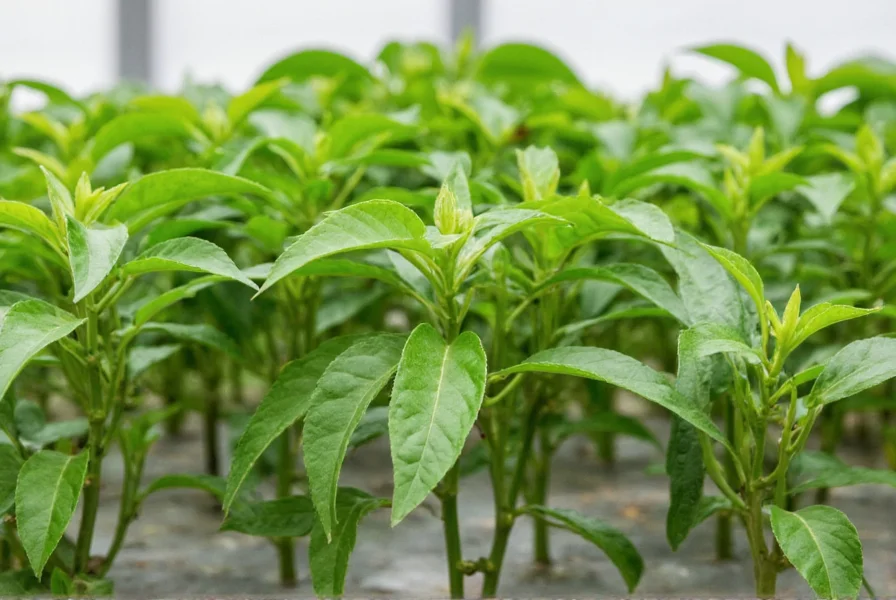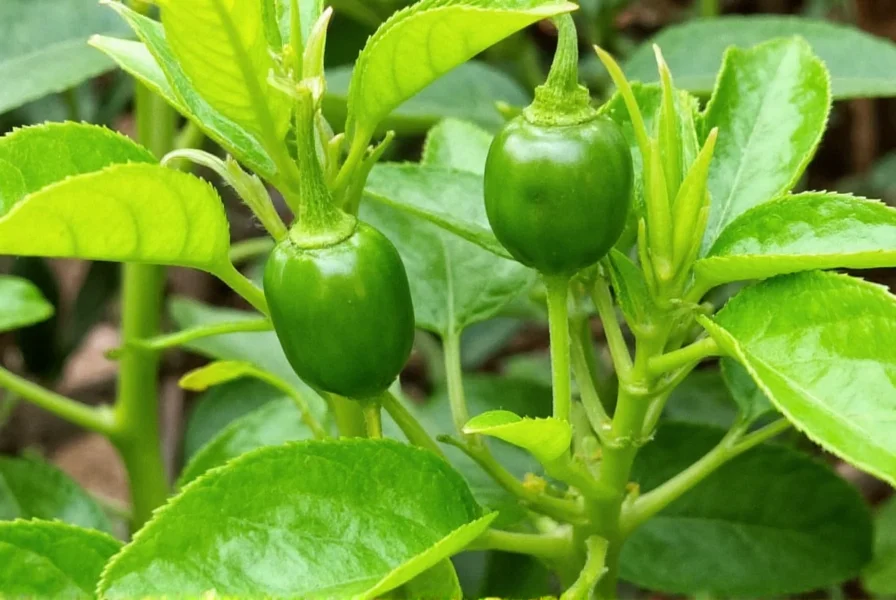Complete Guide to Successful Pepper Growing
Growing peppers successfully requires understanding their specific needs throughout the growing season. Whether you're cultivating sweet bell peppers, spicy jalapeños, or exotic varieties, these warm-season crops reward careful attention with abundant harvests. This comprehensive guide covers everything from seed selection to harvest, ensuring your pepper plants thrive in garden beds or containers.Pepper Varieties and Selection
Understanding the different pepper types is crucial for successful cultivation. Peppers fall into two main categories: sweet peppers (like bell peppers and pimientos) and hot peppers (including jalapeños, habaneros, and cayenne). Each variety has specific growing requirements and maturation timelines.
For beginners, bell peppers offer reliable results with their large, thick-walled fruits. Hot pepper enthusiasts might start with jalapeños or serranos, which are relatively easy to grow. Consider your climate when selecting varieties—some peppers like the 'California Wonder' bell perform better in cooler regions, while 'Thai Hot' varieties thrive in intense heat.
| Pepper Type | Days to Maturity | Heat Level (Scoville) | Best Growing Conditions |
|---|---|---|---|
| Bell Peppers | 60-90 | 0 | Moderate temperatures, consistent moisture |
| Jalapeños | 70-80 | 2,500-8,000 | Warm temperatures, well-drained soil |
| Habaneros | 90-110 | 100,000-350,000 | Long warm season, high humidity |
| Sweet Banana | 60-75 | 0-500 | Full sun, regular watering |
Optimal Growing Conditions for Pepper Plants
Peppers are heat-loving plants that require specific environmental conditions for optimal growth. They grow best in USDA hardiness zones 3-11 as annuals, though they're technically perennials in tropical climates. The ideal soil temperature for germination ranges from 75-85°F (24-29°C), while established plants prefer daytime temperatures between 70-85°F (21-29°C).
Soil preparation significantly impacts pepper growing success. These plants need well-draining soil with a pH between 6.0-6.8. Amend garden soil with 2-3 inches of compost and a balanced organic fertilizer before planting. Raised beds work exceptionally well for pepper cultivation, as they warm faster in spring and provide better drainage.

Planting Techniques for Maximum Yield
Successful pepper growing begins with proper planting techniques. Start seeds indoors 8-10 weeks before your last expected frost date. Use seed starting mix in individual cells to prevent root disturbance during transplanting. Maintain consistent moisture and provide 14-16 hours of light daily for strong seedling development.
When transplanting outdoors, wait until nighttime temperatures consistently stay above 55°F (13°C) and the soil has warmed to at least 65°F (18°C). Harden off seedlings gradually over 7-10 days before permanent planting. Space plants 18-24 inches apart in rows 24-36 inches apart to ensure adequate air circulation and prevent disease.
For container growing, select pots at least 12 inches in diameter with drainage holes. Use high-quality potting mix and consider adding perlite for improved drainage. Container-grown peppers require more frequent watering and fertilization than garden-grown plants.
Essential Care Practices for Healthy Pepper Plants
Proper watering techniques make or break your pepper growing results. These plants need consistent moisture but dislike soggy roots. Water deeply 1-2 times per week, providing about 1-2 inches of water. Mulching with straw or shredded leaves helps maintain soil moisture and temperature while preventing weeds.
Fertilization requirements change throughout the growing season. Apply a balanced fertilizer (10-10-10) at planting time. When flowers appear, switch to a low-nitrogen, high-phosphorus formula (5-10-10) to encourage fruit production rather than excessive leaf growth. Avoid over-fertilizing, which can lead to lush plants with few fruits.
Pruning pepper plants improves air circulation and directs energy toward fruit production. Remove the first set of flowers to encourage stronger plant development. As plants mature, pinch off lower leaves that touch the soil to prevent disease spread. For larger fruit size, consider removing some early flowers to reduce overall fruit load.
Managing Pests and Diseases in Pepper Gardens
Several common pests threaten pepper plants. Aphids cluster on new growth, while spider mites cause stippling on leaves. Cutworms can sever young plants at the soil line. Implement integrated pest management by encouraging beneficial insects like ladybugs and lacewings, using row covers early in the season, and applying insecticidal soap for infestations.
Diseases like bacterial spot, tobacco mosaic virus, and phytophthora blight can devastate pepper crops. Prevent disease through crop rotation (avoid planting peppers in the same spot for 3+ years), proper spacing for air circulation, and watering at soil level to keep foliage dry. Remove and destroy infected plants immediately to prevent spread.

Harvesting and Post-Harvest Handling
Timing your pepper harvest correctly affects both flavor and plant productivity. Most peppers can be harvested at any stage, but they develop full flavor and nutritional value when allowed to reach their mature color. Bell peppers turn from green to red, yellow, or orange when fully mature. Hot peppers often intensify in heat as they mature and change color.
Use sharp scissors or pruning shears to harvest peppers, cutting the stem about ¼ inch above the fruit. Never pull peppers from the plant, as this can damage branches. Regular harvesting encourages continued production—check plants every 2-3 days during peak season. Store harvested peppers in the refrigerator's crisper drawer for up to 2 weeks.
Troubleshooting Common Pepper Growing Problems
Blossom drop occurs when temperatures exceed 90°F (32°C) or drop below 60°F (15°C). Prevent this by providing afternoon shade during heat waves and using row covers during cool spells. Poor fruit set often results from inconsistent watering or excessive nitrogen—adjust your fertilization schedule accordingly.
Yellowing leaves may indicate nutrient deficiency, overwatering, or disease. Test soil and adjust fertilization if needed. If lower leaves yellow first, it's often normal as plants mature. However, widespread yellowing requires investigation of watering practices and potential nutrient imbalances.
Small fruit size typically stems from overcrowding, insufficient nutrients, or inadequate water during fruit development. Thin crowded plants, ensure proper fertilization, and maintain consistent moisture levels during flowering and fruit set for larger peppers.
Advanced Techniques for Exceptional Pepper Yields
Season extension techniques can significantly increase your pepper harvest. Use black plastic mulch to warm soil earlier in spring. Wall o' Waters or other protective structures allow earlier planting by protecting against late frosts. In fall, cover plants with frost cloth when temperatures threaten to drop below 50°F (10°C).
Companion planting enhances pepper growing success. Basil repels thrips and improves flavor. Onions and garlic deter pests with their strong scent. Avoid planting peppers near beans or fennel, which can inhibit growth. Marigolds throughout the garden help deter nematodes and other soil pests.
Pepper Growing Frequently Asked Questions
How often should I water pepper plants?
Pepper plants need consistent moisture but dislike soggy soil. Water deeply 1-2 times per week, providing about 1-2 inches of water. Container plants may need daily watering during hot weather. Check soil moisture by inserting your finger 2 inches deep—water when the top inch feels dry.
Why are my pepper plants flowering but not producing fruit?
This common issue, called blossom drop, typically occurs due to temperature extremes (above 90°F or below 60°F), inconsistent watering, or excessive nitrogen fertilizer. Ensure proper spacing for pollination, maintain consistent soil moisture, and use a balanced fertilizer with higher phosphorus during flowering to encourage fruit set.
Can peppers be grown in containers successfully?
Yes, peppers grow well in containers with proper care. Choose pots at least 12 inches in diameter with drainage holes. Use high-quality potting mix and add perlite for better drainage. Container-grown peppers need more frequent watering and fertilization than garden plants. Place containers in locations receiving 6-8 hours of direct sunlight daily for best results.
How do I prevent pests from damaging my pepper plants?
Prevent pests through crop rotation, proper spacing, and encouraging beneficial insects. Use floating row covers early in the season to protect young plants. Inspect plants regularly for early pest detection. For aphids or spider mites, spray with insecticidal soap. Remove and destroy severely infested plants to prevent spread to healthy plants.
When is the best time to harvest peppers for maximum flavor?
Peppers develop their full flavor and nutritional value when allowed to reach their mature color. While you can harvest bell peppers when green, they become sweeter and more nutritious when left to turn red, yellow, or orange. Hot peppers often intensify in heat as they mature. Harvest in the morning when peppers are crisp and cool for best quality.











 浙公网安备
33010002000092号
浙公网安备
33010002000092号 浙B2-20120091-4
浙B2-20120091-4